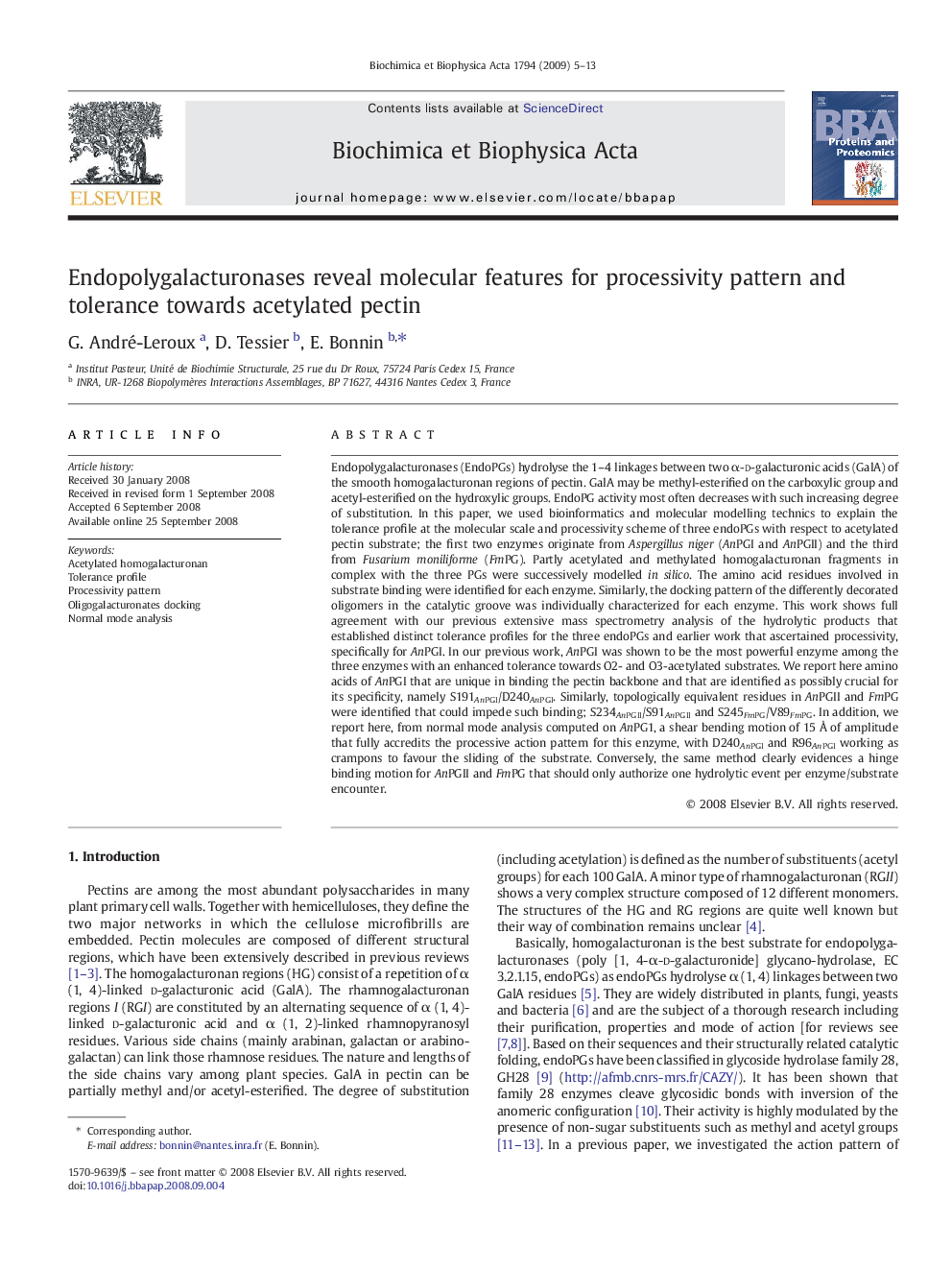| کد مقاله | کد نشریه | سال انتشار | مقاله انگلیسی | نسخه تمام متن |
|---|---|---|---|---|
| 1178151 | 962671 | 2009 | 9 صفحه PDF | دانلود رایگان |

Endopolygalacturonases (EndoPGs) hydrolyse the 1–4 linkages between two α-d-galacturonic acids (GalA) of the smooth homogalacturonan regions of pectin. GalA may be methyl-esterified on the carboxylic group and acetyl-esterified on the hydroxylic groups. EndoPG activity most often decreases with such increasing degree of substitution. In this paper, we used bioinformatics and molecular modelling technics to explain the tolerance profile at the molecular scale and processivity scheme of three endoPGs with respect to acetylated pectin substrate; the first two enzymes originate from Aspergillus niger (AnPGI and AnPGII) and the third from Fusarium moniliforme (FmPG). Partly acetylated and methylated homogalacturonan fragments in complex with the three PGs were successively modelled in silico. The amino acid residues involved in substrate binding were identified for each enzyme. Similarly, the docking pattern of the differently decorated oligomers in the catalytic groove was individually characterized for each enzyme. This work shows full agreement with our previous extensive mass spectrometry analysis of the hydrolytic products that established distinct tolerance profiles for the three endoPGs and earlier work that ascertained processivity, specifically for AnPGI. In our previous work, AnPGI was shown to be the most powerful enzyme among the three enzymes with an enhanced tolerance towards O2- and O3-acetylated substrates. We report here amino acids of AnPGI that are unique in binding the pectin backbone and that are identified as possibly crucial for its specificity, namely S191AnPGI/D240AnPGI. Similarly, topologically equivalent residues in AnPGII and FmPG were identified that could impede such binding; S234AnPGII/S91AnPGII and S245FmPG/V89FmPG. In addition, we report here, from normal mode analysis computed on AnPG1, a shear bending motion of 15 Å of amplitude that fully accredits the processive action pattern for this enzyme, with D240AnPGI and R96AnPGI working as crampons to favour the sliding of the substrate. Conversely, the same method clearly evidences a hinge binding motion for AnPGII and FmPG that should only authorize one hydrolytic event per enzyme/substrate encounter.
Journal: Biochimica et Biophysica Acta (BBA) - Proteins and Proteomics - Volume 1794, Issue 1, January 2009, Pages 5–13